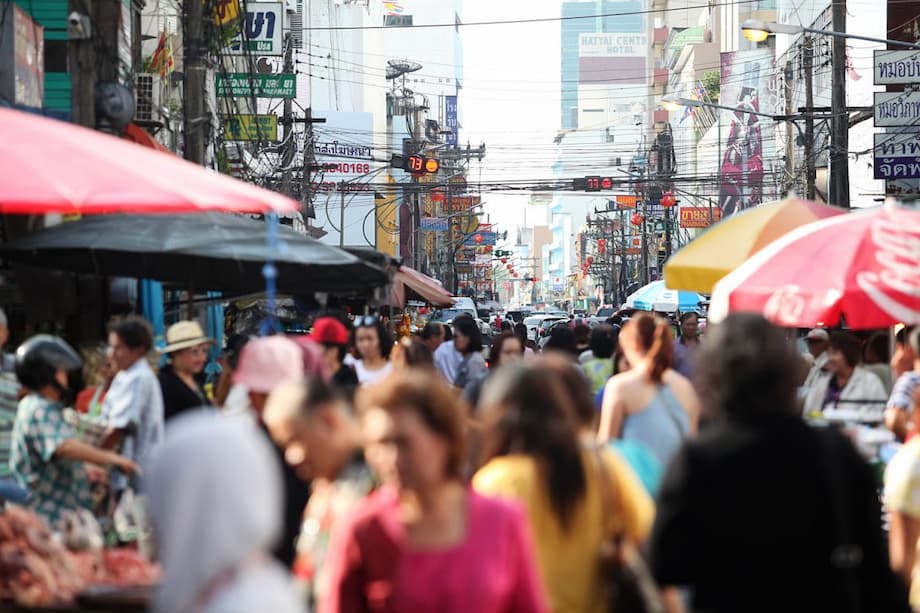Why Thailand Is Losing Ground With Chinese Travelers
Across the first half of 2025, Chinese travelers chose Vietnam more often than Thailand. The shift is sizable. Industry tallies indicate Chinese arrivals to Thailand fell by about 35 percent this year, while Vietnam welcomed a surge of visitors from the mainland. Safety concerns sit at the heart of the change. The conversation inside China has been dominated by stories about scams and trafficking in mainland communities near Southeast Asia, and many families now screen destinations through a safety lens before price or scenery. Thailand, long the default short haul getaway for China, has felt that shift faster than its neighbors.
- Why Thailand Is Losing Ground With Chinese Travelers
- Vietnam’s Appeal and How It Captured Demand
- Why Japan Keeps Winning With Chinese Tourists
- The Price Problem in Thailand
- Measuring the Shock to Thailand Tourism
- What Thailand Is Doing to Rebuild Trust
- How Safety Perceptions Spread and Why They Stick
- What Chinese Travelers Want Now
- Scenarios for 2025 and Beyond
- Key Points
The turning point for many came after Chinese actor Wang Xing was lured to Bangkok for a fake job, then trafficked across the border to Myanmar before being rescued. The incident, widely discussed on Chinese social platforms, echoed the plot of the 2023 box office hit “No More Bets” about online fraud rings. Even though many scam compounds are located outside Thailand in border zones of Myanmar, Cambodia, and Laos, the headline effect linked the danger to trips that route through Thailand’s airports and land borders. Families planning Lunar New Year and summer holidays began to rethink itineraries.
Travel platforms recorded the shift in real time. Net bookings to Thailand fell by around 15 percent in the week after news of Wang’s rescue, and flight cancellations from China to Thailand spiked in January. Air seat capacity between the two countries dropped by more than 11 percent from January to August compared with the previous year. Some of the demand spilled to other destinations. Singapore and Malaysia saw stronger traffic around the holidays, while bookings to Australia, the United Arab Emirates, and South Korea picked up. The broader story, however, is that Chinese travelers became cautious about Southeast Asia as a region, with Thailand bearing the brunt.
Perception now drives choices as much as facts. Surveys of Chinese outbound travelers show safety ranking as the top planning factor, ahead of cuisine and accommodation. Thailand’s score on safety has worsened compared with last year, a reflection of recurring crime headlines that involve Chinese victims. Vietnam and Cambodia are also viewed cautiously, but to a lesser degree. Once a destination is tagged as risky in online forums, it takes time and visible changes to rebuild trust.
Vietnam’s Appeal and How It Captured Demand
Vietnam had positioned itself to absorb the redirected demand. The country allows visa free entry for Chinese tour groups and keeps travel costs lower than many rivals. For first time outbound travelers from smaller Chinese cities, Vietnam offers short flights, beaches and mountain scenery, and city breaks that feel new. Local authorities and private operators have leaned into the moment with paragliding shows, hot air balloon festivals, and cultural events in border provinces. Hotels and shops in hubs such as Danang and Nha Trang are hiring Mandarin speaking staff, adding bilingual menus, and curating packages for families and small groups.
The payoff is visible in the numbers. Vietnam received nearly 14 million foreign visitors in the first eight months of 2025. More than 3.5 million were from mainland China, a year on year increase of about 44 percent. Tourism related retail sales in Vietnam rose by roughly 51 percent compared with 2024. Analysts now expect Vietnam to set a new record for total arrivals in 2025, with projections near 22.6 million. The country has also started to draw more independent Chinese travelers who want authentic food, local transport adventures, and flexible itineraries instead of low cost group tours that rush through shopping stops.
Why Japan Keeps Winning With Chinese Tourists
Japan still sits at the top of the wish list for many Chinese travelers despite not offering visa free entry. The reasons are straightforward. Tourists cite safety, cleanliness, predictable rules, and reliable urban transport. Flight options remain plentiful from major Chinese cities, and proximity keeps travel times reasonable for families with children or elderly parents. The combination makes first time visits and repeat trips comfortable for those who value order and convenience.
The exchange rate adds another pull. A weak yen has turned Japan into a shopping haven for imported cosmetics, electronics, fashion, and daily goods. Shoppers make lists, compare prices online, and fly in for seasonal sales. Visitors accept higher costs for accommodation and dining because they trust that what they buy will be genuine and that support will be available if something goes wrong. In conversations about value, safety now acts like a premium that many are willing to pay.
The Price Problem in Thailand
Price used to be Thailand’s ace. That edge has dulled. The baht has strengthened against the yuan, which makes hotels, tours, and meals around 20 percent more expensive for Chinese visitors than last year by some estimates. Daily costs, from airport transfers to coffee, have climbed faster than in nearby markets. Thai business owners also face rising wages and energy bills, so discounts are harder to sustain during low season.
Capacity has struggled to keep pace with demand pockets. Airline seats between China and Thailand fell more than 11 percent through August compared with a year earlier, limiting choice on peak days and pushing fares higher. Thailand also registered a drop of about 7 percent in overall foreign arrivals up to late summer, a sign that pressures are broader than one source market. Price sensitive families now stack these signals together with safety headlines and choose elsewhere.
Measuring the Shock to Thailand Tourism
The scale of the shift is now clear. Between January and mid September 2025, about 3.23 million Chinese tourists visited Thailand. Officials expect the full year figure to come in near 5 million, down from 6.7 million in 2024 and far below the pre pandemic high of more than 11 million in 2019. The gap matters because Chinese travelers usually stay longer and spend more on shopping and dining than many other segments.
Industry analysts estimate that as much as 3.5 billion dollars in tourism revenue that Thailand might have captured this year has flowed to Vietnam and other neighbors. Hotel operators in Thailand are bracing for a contraction in revenues around 4 to 5 percent this year. With fewer flights in the market and weaker confidence among Chinese consumers, last minute spikes around national holidays have not been enough to fill the hole.
Booking patterns also changed. Data providers reported a double digit decline in net bookings to Thailand after the Wang incident became public, and flight cancellations from China spiked in January ahead of the holiday rush. Some Chinese travelers scrapped Southeast Asia trips completely and rebooked to South Korea or the United Arab Emirates. Others chose Singapore and Malaysia because they perceived city center environments to be easier to navigate and more secure.
What Thailand Is Doing to Rebuild Trust
Thai authorities and the industry have moved to show progress on safety. The Tourism Authority of Thailand introduced the Trusted Thailand certification to identify hotels, malls, and attractions that meet higher standards for security and service. A Nihao Month marketing push and joint campaigns with Chinese online travel agencies are designed to keep Thailand visible while confidence is rebuilt. A Chinese Passport Privilege program gives visitors seasonal discounts and gifts at approved venues between late September and the end of December 2025.
The government has also highlighted police actions against fraud rings and is working with partners in China and neighboring countries to target cross border scam networks. After the kidnapping case drew intense attention, Thailand’s prime minister appeared in a reassurance video aimed at the Chinese audience. The message is that visitors will see more patrols in tourist zones, easier access to emergency help, and stricter screening of suspect operators.
Industry leaders argue that safety updates should be paired with a product upgrade. Hotel and tour association executives have urged the government to invest beyond Bangkok, Phuket, and Chiang Mai, and to create new routes that promote lesser known regions. They also want clearer standards for transport and tours, better airport transfers, and multilingual support in provincial cities. The goal is to present Thailand as a safe, higher quality destination that still undercuts Japan on price.
How Safety Perceptions Spread and Why They Stick
Sentiment surveys inside China show why reassurance takes time. In the latest readings, more than half of respondents labeled Thailand unsafe, up sharply from the previous spring. Vietnam and Cambodia also scored near the bottom of the safety rankings. Safety topped the list of decision factors for about 41 percent of respondents, well ahead of food and hotel choices. Those who pick destinations for extended family trips place even more weight on this measure.
Stories about crime resonate because they blend real risks with familiar narratives. The blockbuster film “No More Bets” dramatized trafficking and online fraud rings in Southeast Asia and created a cultural shorthand for danger in the region. The Wang case then supplied a real name and face. Most of the trafficking compounds are across borders where enforcement is weak. Still, for many travelers that nuance is lost. If a journey starts in Bangkok and a victim ends up in Myanmar, people connect the dots and avoid the whole route.
Social media makes the effect durable. Viral posts spike after each high profile case and group chats circulate warnings long after police shut a site down. Until travelers hear about arrests, safe corridors, and fast help lines from friends who have tested the system, the default reaction is to pick a destination that feels uncomplicated and safe.
What Chinese Travelers Want Now
A new cohort of Chinese tourists is shaping demand. Many are first time passport holders from inland cities who grew up with mobile payments and ride hailing, and who plan trips through short videos and peer reviews. They want authentic food, access to nature, and a mix of cultural and modern experiences. They also want flexibility. That often means independent travel or small group trips rather than budget group tours that pack dozens onto a bus.
Practical upgrades go a long way with this crowd. Bilingual signage, easy digital payments, clearly priced taxis and transfers, and fast e visa processes lower stress. Visible police presence in tourist zones, well publicized helplines that answer in Mandarin, and clean public transport add layers of comfort. If those basics are in place, travelers are willing to pay for rooftop dining, spa packages, and day trips that showcase wildlife, waterfalls, and local crafts.
Scenarios for 2025 and Beyond
Peaks can still surprise. South Korea is on track for a full rebound of Chinese travelers this year, and Singapore and Malaysia have at times drawn more China arrivals than in 2019. Winter months are traditionally strong for Thailand, and creative packages could bring a lift. The problem is that caution remains high. Higher airfares, widely shared safety alerts, and a stronger baht reduce the impulse to book Thailand for now.
The long term picture contains upside. Chinese transport authorities projected a record nine billion trips during the 40 day Lunar New Year travel rush. China is also nurturing domestic tourism, which takes some short term pressure off outbound travel. Yet the pool of potential international travelers is expanding. Industry leaders in Thailand expect the Chinese middle class to grow toward 800 million by 2035, which would produce deep demand for short haul holidays across Asia.
To benefit from that new cycle, Thailand will need to show sustained progress against fraud, deliver predictable service quality, and differentiate its product. That means joint police operations with neighbors, real time support for visitors, and transparent pricing for tours and taxis. It also means refreshing itineraries and investing in cleaner beaches, safer nightlife districts, and modern rail links between airports and resort areas. If travelers feel safe and see quality gains, Thailand can win back value minded families while positioning itself closer to Japan on standards.
Key Points
- Safety fears have pushed many Chinese travelers to pick Vietnam over Thailand in 2025.
- Bookings to Thailand dropped after the kidnapping and rescue of actor Wang Xing, and flight cancellations spiked in January.
- Air seat capacity between China and Thailand fell by more than 11 percent through August.
- Vietnam recorded nearly 14 million foreign arrivals in the first eight months, with more than 3.5 million from China and a 44 percent year on year rise.
- Tourism retail sales in Vietnam are up about 51 percent this year as travelers spend on curated experiences.
- Thailand is expected to welcome about 5 million Chinese visitors in 2025, far below the 2019 record of over 11 million.
- Industry estimates suggest up to 3.5 billion dollars in tourism revenue has shifted from Thailand to neighbors.
- A stronger baht has made Thailand roughly 20 percent more expensive for Chinese visitors compared with last year.
- Japan remains a top choice for Chinese tourists because of safety, order, and a weak yen that boosts shopping value.
- Thai authorities are rolling out safety certifications, joint campaigns, and targeted discounts to rebuild trust.




